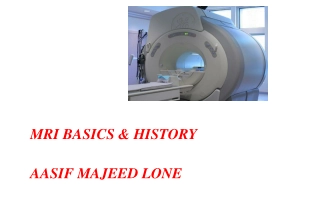Evolution of Radiopharmacy: A Specialized Field in Pharmacy
The evolution of radiopharmacy as a specialty has progressed rapidly since the 1950s, involving the preparation, dispensing, and clinical investigation of radioactive materials as drugs. Radiopharmacy plays a crucial role in the development and use of radiopharmaceuticals for diagnostic, therapeutic, and research purposes. Diagnostic radiopharmaceuticals are particularly vital as radioactive tracers for imaging and studying the body's biochemistry, physiology, and anatomy. Radiopharmacy involves strict quality control measures to ensure the safe and effective use of radioactive drugs in healthcare.
Download Presentation
Please find below an Image/Link to download the presentation.
The content on the website is provided AS IS for your information and personal use only. It may not be sold, licensed, or shared on other websites without obtaining consent from the author. Download presentation by click this link. If you encounter any issues during the download, it is possible that the publisher has removed the file from their server.
Presentation Transcript
Radiopharmaceuticals Fourth year -Semester VIII 2021 Alkhair Adam Khalil, B. Pharm, M. Pharm College of Pharmacy Karary University Department of Pharmaceutical Chemistry
Introduction: The evolution of radiopharmacy as a specialty has been extremely rapid when compared to other disciplines within pharmacy. The preparation, dispensing, and clinical investigation of radioactive materials as drugs started experimentally early in the 1950s with the use of 131I and 32P. As the early use of these and other nuclides evolved and as the importance of labeled compounds as imaging agents became recognized, primary development of radiopharmaceuticals lay with the research radiochemist and physician. The proliferation of these radioactive imaging agents required the parallel development of specialists qualified to prepare, run quality control on, run clinical studies on, and dispense these agents. In short, by evolution radiopharmacy and the radiopharmacist emerged as an essential discipline and as a partner to nuclear medicine and the nuclear medicine physician.
Definitions: 1. Radiopharmacy: Is the place where radioactive drugs are prepared and dispensed. The radiopharmacy also serves as a depot for the storage of radioactive materials and nonradioactive supplies. The radiopharmacy is responsible for quality control of the radiopharmaceuticals. The routine preparation procedures often incorporate quality control tests for radiochemical purity.
Definitions: 2. Radiopharmaceuticals: The term is defined as radioactive drug that exhibits spontaneous disintegration of unstable nuclei with the emission of nuclear particles or photons and includes any nonradioactive reagentkit or nuclide generator that is intended to be used in the preparation of any such substance. The term radioactive drug includes radioactive biologic product. Radiopharmaceuticals are usually classified as diagnostic, therapeutic, or research radiopharmaceuticals.
Definitions: 2.1. Diagnostic Radiopharmaceuticals: These are radioactive drugs used for diagnostic purposes as radioactive tracers in patients. These drugs broadcast their positions within the body by their gamma-ray emissions. By monitoring these broadcasts we can infer the concentrations of the tracer material in different organs. Using the signals, we can even obtain low-resolution images of the organs. By monitoring these broadcasts as a function of time, we can study the kinetics and metabolism of the drug within the body. The monitoring device is usually a collimated external gamma-ray detector. Thus, diagnostic radiopharmaceuticals are administered to patients to differentiate normal from abnormal biochemistry, physiology, or anatomy.
Definitions: 2.2. Therapeutic Radiopharmaceuticals: Radioactive substances can be administered to a patient for the purpose of delivering radiation to body tissues internally. The best example of this is the administration of iodide 131I for the purpose of thyroid ablation in patients who are hyperthyroid. The thyroid is internally irradiated by the radioactive iodine that it concentrates. Other radiopharmaceuticals that are used for therapeutic purposes are those administered in the treatment of certain cancers.
Definitions: 2.3. research radiopharmaceuticals (Tracers): Another type of radiopharmaceutical is a regular drug labeled with a small quantity of radioactive substances. They are administered to the patients, not for diagnostic purposes, but to study the metabolism and kinetics (biodistribution) of a drug that may eventually be used in a nonradioactive form. 3. Radiopharmacists: Responsible for the filling and dispensing of prescriptions for radioactive tracers and for the clinical aspects of radiopharmacy. In order to carry out these functions, radiopharmacists need to be trained in: (1) radioactive tracer techniques, (2) safe handling of radioactive materials, and (3) preparation and quality control of drugs prepared for administration to humans.
Definitions: Radiopharmacists are also required to understand the basic principles of nuclear medicine so that they can function efficiently when troubleshooting clinical problems involving performance failure of the radioactive tracer in an individual patient. 4. Nuclear medicine: Nuclear medicine is a specialty devoted to the diagnostic and therapeutic use of radioactive compounds. The spectrum of diagnostic procedures includes (1) static imaging of organs and compartments, (2) sequential or functional imaging of physiologic processes, (3) in vivo tracer studies , and (4) in vitro studies.
Definitions: 5. Nuclear medicine physician: A physician, after fulfilling one of several accepted combinations of training and experience, and completed an approved residency program can become qualified, board-certified nuclear medicine physician. Nuclear medicine is interdisciplinary in nature and relies heavily on interactions with all medical specialties. Input into the development of this field comes from continuing advances in electronics, computer science, physics, analytical chemistry, nuclear chemistry, and radiopharmacy.
Pharmacy Vs Radiopharmacy The pharmacist deals primarily with therapeutic drugs. A radiopharmacist deals primarily with diagnostic drugs. Both are concerned with drug performance. Both are concerned with drug interactions; one involves changes in the therapeutic process, and the other involves change in bio-distribution that influences the diagnostic process. Most pharmacists compound only a few of the drugs they dispense. A radiopharmacist will probably compound at least 85% of the doses. Most pharmacists rely on the manufacturer to carry out the quality control testing. A radiopharmacist often does quality control testing daily on many products.
Pharmacy Vs Radiopharmacy Most radiopharmaceuticals are administered intravenously; thus aseptic technique and control of pyrogens is of as much concern to the radiopharmacist as it is to the hospital pharmacist who prepares parenteral injections. A radiopharmacist also is much more involved in troubleshooting activities. When the bio-distribution of a radioactive tracer is other than expected, it becomes the responsibility of the radiopharmacist to determine the cause of the problem. The bio-distribution is usually evident by the quality of the image taken. Thus, bio-distribution is a daily concern of the radiopharmacist.
Pharmacy Vs Radiopharmacy The radiopharmacist is also a clinical pharmacist. He is concerned with drug interactions and with adverse reactions. He is involved with consulting the physicians on the performance of the tracer and in recommending which tracers can be used in concert with other drugs that have been given to the patient. The radiopharmacist consults mostly with physicians and nuclear medical technologists rather than with patients. Most patient contact will involve only the taking of drug histories and the extraction of other data that can influence the bio-distribution of the tracer
Pharmacy Vs Radiopharmacy A regular pharmacy is basically a one-way street, accepting prescriptions primarily from patients and dispensing most drugs directly to the patient. Only rarely will radiopharmacists dispense directly to a patient. Usually, the drugs are dispensed to nuclear medicine physicians who intravenously to the patient in the nuclear medicine clinic. The syringes, needles, and other injection devices are radioactive wastes. Usually, these are returned to the radiopharmacy for disposal or storage. Thus, a radiopharmacy is a two-way street. The volume of wastes received may be greater than the volume of materials dispensed. administer the drugs
Pharmacy Vs Radiopharmacy The greatest area of difference between a radiopharmacy and other pharmacies is the control of radioactive materials and the concern for radiation safety. The control of radioactive materials is basically similar to that of other controlled substances, such as narcotics. The practice of radiation safety is basically similar to the control of microbiologic contamination. Aseptic techniques can thus be readily augmented to include radiation safety technique. The regulatory problems of a radiopharmacy are more complex than those of other pharmacies. Essentially, all regulations that apply to pharmacies or pharmacists apply to radiopharmacies and radiopharmacists.
Basic Physics of Radiation The Atom. The nucleus. Components of the Nucleus. Energy content of the Nucleus. Types of Radiations ( alpha , beta, gamma , X-ray). Origin/characteristics. Isotopes & Radioisotopes , Nuclides & Radionuclides. Nuclear equation/Chemical equation. Units of Radiation.
The nucleus of an atom consists of protons and neutrons (two types of baryons) bound by the nuclear force (also known as the residual strong force). These baryons are further composed of subatomic fundamental particles known as quarks bound by the strong interaction. So, what are baryon and quark ????
Quarks A quark is an elementary particle and a fundamental constituent of matter. Quarks combine to form composite particles called hadrons, the most stable of which are protons and neutrons, the components of atomic nuclei. There are six types (flavors) of quarks, known as : up, down, strange, charm, bottom, and top.
Composite particles Hadrons: are defined as strongly interacting composite particles. Hadrons are either: 1. Fermions, they are called baryons. 2. Mesons. A. Baryons:Ordinary baryons (fermions) contain three quarks or three antiquarks. example: Nucleons are the fermionic constituents of normal atomic nuclei: Protons, composed of two up and one down quark (uud) Neutrons, composed of two down and one up quark (ddu) B. Mesons: are made up of a quark and an antiquark. They are not themselves elementary particles, they mediate the residual strong force between nucleons.
Quark structure of Nucleons (Baryons) Proton uud Neutron ddu
Basic atomic particulates (natural):- 1. light: electron, neutrino (no charge), meons 2. Mesons: (in nucleus) 3. Heavy: protons , neutrons. (in nucleus) Neutron (mass) is more than proton + electron. Free neutron decays in 15 mins neutron proton + electron + anti neutrino Proton is the least in mass in its group (others are artificial), thus stable (10years).
Nuclide/Nuclear symbol Mass number number of protons and neutrons=A 11 5 B atomic symbol=X Atomic number number of protons=Z
Decay of Radionuclides Spontaneous Fission: Fission in heavy nuclei can occur spontaneously or by bombardment with energetic particles. Alpha ( )Decay. Beta (B-) Decay. Positron (or B+) Decay. Electron Capture (EC) . Isomeric Transition (IT).
Some nuclides are unstable and they split up to form smaller elements. The nucleus splits and protons and neutrons form new nuclei. The electrons divide themselves between the two. Sometimes energy is produced from this reaction. This energy is called the nuclear energy (Residual strong force). Particles such as protons, neutrons and electrons fly out while the original nucleus divides. This process is called radioactive decay and the element is said to be radioactive. The particles and energy are called radioactivity.
Neutron Proton ratio Because protons repel each other the nucleus needs a certain proton to neutron ratio for stability. Neutrons play a key role stabilizing the nucleus. Therefore, the ratio of neutrons to protons is an important factor.
Neutron Proton ratio For smaller nuclei (Z 20) stable nuclei have a neutron-to- proton ratio close to 1:1.
Neutron Proton ratio As nuclei get larger, it takes a greater number of neutrons to stabilize the nucleus.
Stable Nuclei The shaded region in the figure shows what nuclides would be stable, the so- called belt of stability
Stable Nuclei Nuclei above this belt have too many neutrons. They tend to decay by emitting beta particles.
Stable Nuclei Nuclei below the belt have too many protons. They tend to become more stable by positron emission or electron capture.
Stable Nuclei There are no stable nuclei with an atomic number greater than 83. These nuclei tend to decay by alpha emission. The largest known completely stable nucleus is lead-208 which contains a total of 208 nucleons (126 neutrons and 82 protons).
Types(some) of Radiations 1. Alpha ray (particles): Are helium nucleus (4He2+) Deflects to the right in magnetic(electric) field. Range 10cm. Can not pass papers, clothes , Al foil sheet, in water = 0.005 cm High mass & high ionizing ability. Nuclides emits an alpha particle its atomic number decrease by 2 and atomic mass decrease by 4 Its energy = 5Mev.
2. Beta ray (particles): Are either electrons or positrons. Range 10m. N > P , 1N 1P + electron (Beta -ve ) +antineutrino. P > N , 1P 1N + positron (Beta +ve ) + neutrino. Nuclide emits Beta -ve particle its atomic number increase by 1 and atomic mass remains constant. Nuclide emits Beta +ve particle its atomic number decrease by 1 and atomic mass remains constant. Protection : ( 0.8 mm Pb, 1.5 mm Steel, 5mm Concrete, 7mm Soil , 16mm wood.) Its energy between Kev to Mev.
3. Gamma ray (Photons): Electromagnetic ray of very short wavelength, does not deflect in magnetic/electric field no charge no mass It penetrates human body completely Protection : ( 1.8 cm Pb ,2.8cm steel ,10cm concrete , 14cm soil ,25cm wood). The X-ray has less energy than the gamma ray. The X-ray are electrons obtained when high energetic electrons are made to strike a metal. Gamma ray emission is associated with alpha & beta rays emissions.
Alpha particles are the least penetrating. Gamma rays are the most penetrating. Alpha radiation has a low penetration, but it is the most damaging to living tissue because it deposits all its energy along a short path
particle Alpha a Beta b Gamma g 4amu 0 0 Mass Charge Effect +2 -1 0 Radioisotope loses two protons and two neutrons The ELEMENT changes Radioisotope converts a neutron to a proton & ejects an electron The ELEMENT changes Radioisotope loses energy The element does not change Helium nucleus High energy electromagnetic radiation electron What it is Paper/skin 1cm/metal foil Lead/concrete Stop it Medium ionization Lowest ionization High ionization damage
What are ? 1. Isotopes (radioisotopes), 2. Isobars, 3. Isotones 4. Isomers
1. Isotones: Atoms of different elements with the same number of Neutrons(N). Example: 131I53 & 132Xe54 (both have 78 neutrons) 2. Isomers: Atoms with the same Z & A & N , but of which the nuclei exist in different excited states longer than 10 9 seconds. Meta-stable nucleus (m): Remains in excited state for seconds , minutes or hours. Example: 99mTc 99Tc (within 6 hours)
3. Isotopes: Atoms of the same element (same atomic number) with different number of Neutrons (N). Example: Cupper has two isotopes 63Cu29 & 65Cu29 having the same chemical properties , but different mass & nuclear properties. 4. Isobars: Atoms of different elements having the same mass. Example: 3He2 & 3H1
Writing a Balanced Nuclear Equation Nuclear equation - used to represent nuclear change. The total mass on each side of the reaction arrow must be identical. The sum of the atomic numbers on each side of the reaction arrow must be identical.
Alpha Decay + 238 92 234 4 2 U Th 90 He 238 = 234 + 4 mass number 92 = 90 + 2 atomic number
Half-Life The half-life (T ) is the amount of time necessary for one-half of the radioactive material to decay. Each radioactive isotope has its own half-life Ranges from a fraction of a second to billion years The shorter the half-life, the more unstable the isotope
Half-Lives of Selected Radioisotopes Radioisotope Carbon-14 Cobalt-60 Hydrogen-3 Iodine-131 Iron-59 Molybdenum-99 Sodium-24 Strontium-90 Technetium-99m Uranium-235 Symbol Half-life 14C6 60Co27 3H1 131I53 59Fe26 99Mo42 24Na11 90Sr38 99mTc43 235U92 5730 y 5.3 y 12.3 y 8.1 d 45 d 67 h 15 h 28 y 6 h 710 million y
Units of Radiations 1. Units of Activity: A. Curie A unit to measure Radioactivity & is defined as the number of disintegrations in one second for a one gram of pure radium (226Ra) & it equals 3.7 X???? disintegrations/sec. B. Becquerel = one disintegration/second
2. Units of Exposure Roentgen: Quantity of radiation( gamma & X-ray) that causes ionization of one cubic cm of dry air at zero temperature degree & 76 cm Hg atmospheric pressure. It equals absorbed energy of 87.7 erg for every gram of dry air , which produces energy of 2.58 X 10 4 Coulomb in every kg of air.
3. Units of Absorbed dose: A. Rad: It is an energy of 0.01 joule absorbed by one Kg of biologic tissue from any ionizing radiation regardless of the time of exposure. One Rad =0.01 joule. B. Gray: One Gray (Gy) = 1 joule = 100 Rads. One Roentgen in air =0.877 Rad =0.0087 Gy. One Roentgen for human tissue = 0.96 Rad = 0.0096 Gy

















































